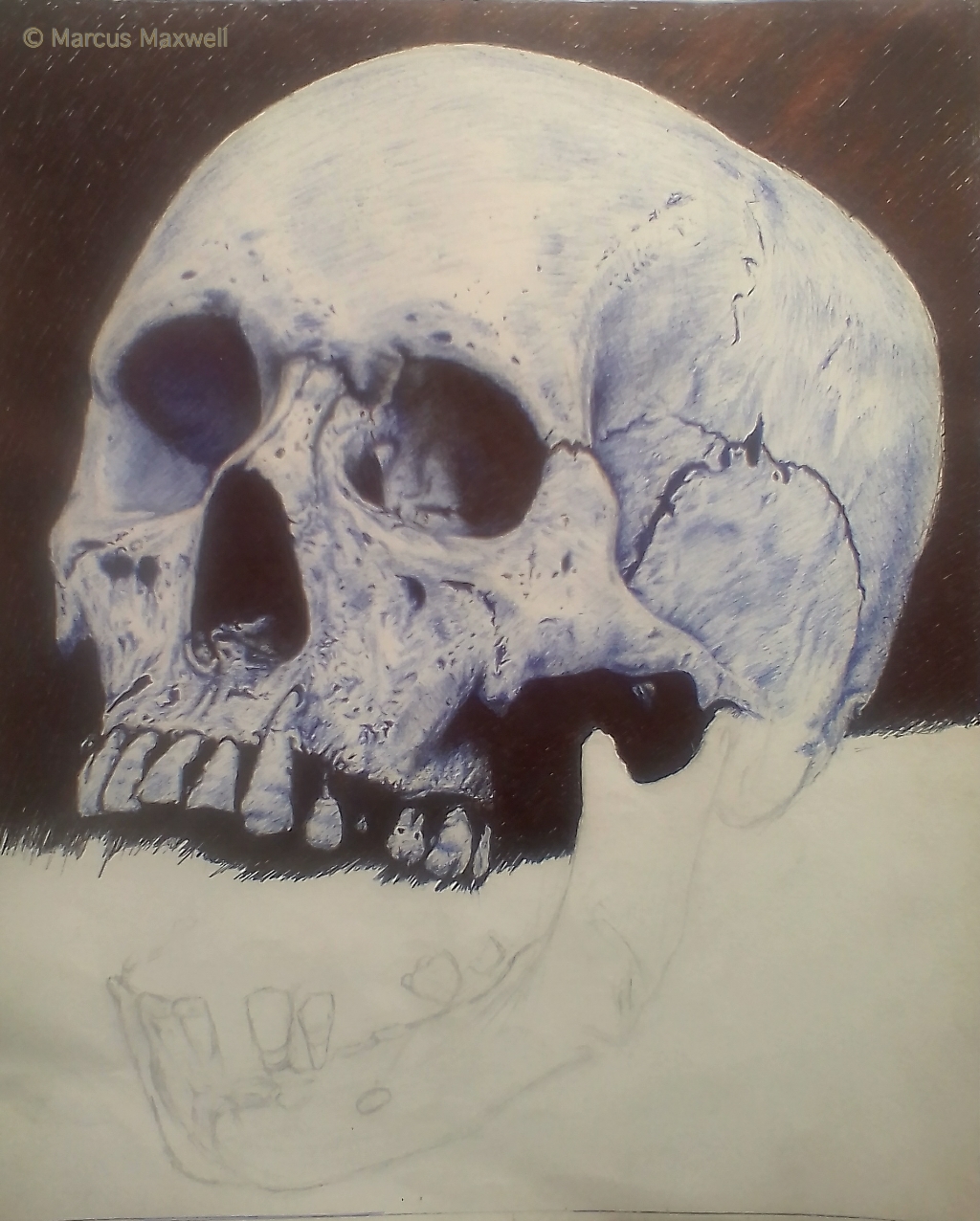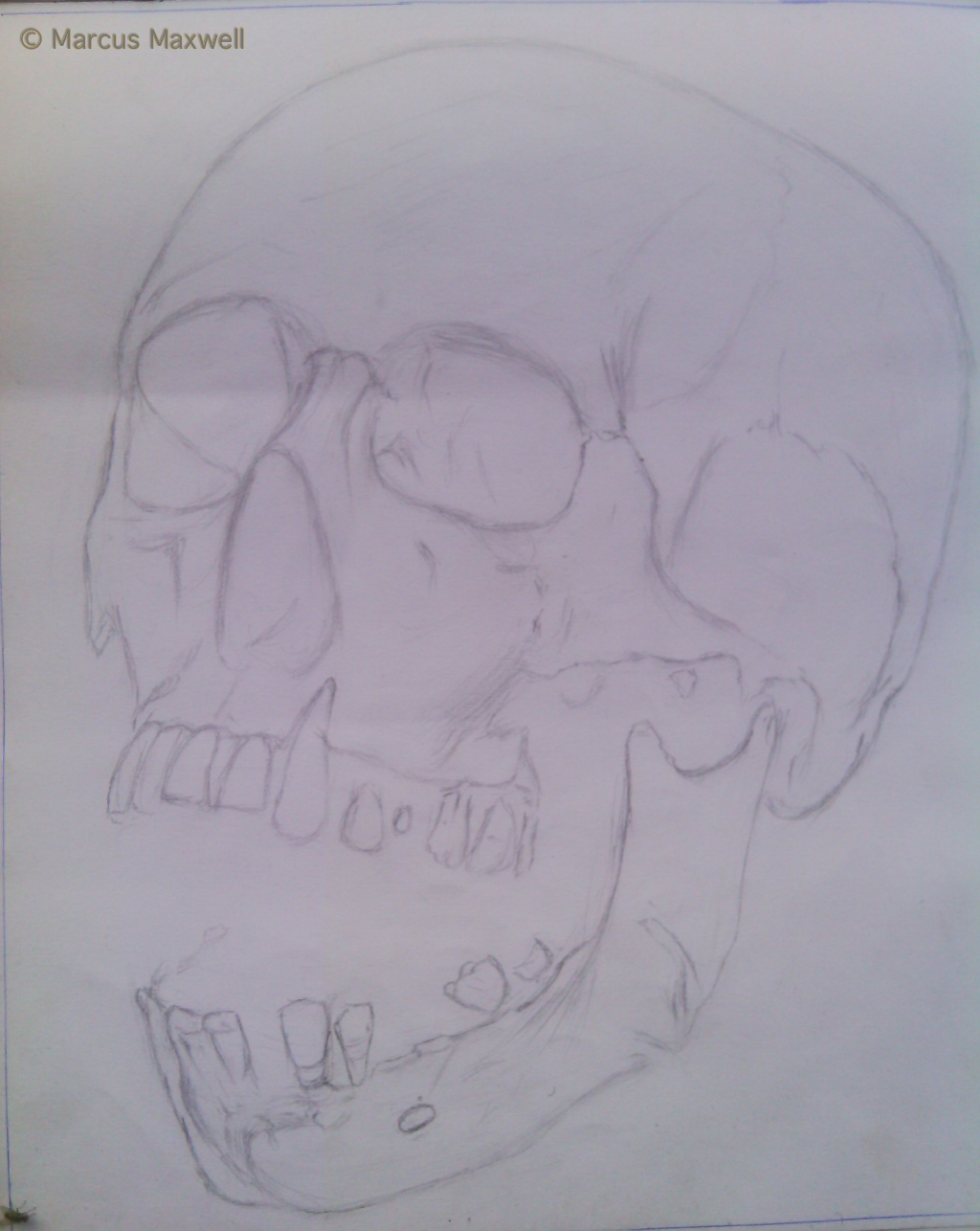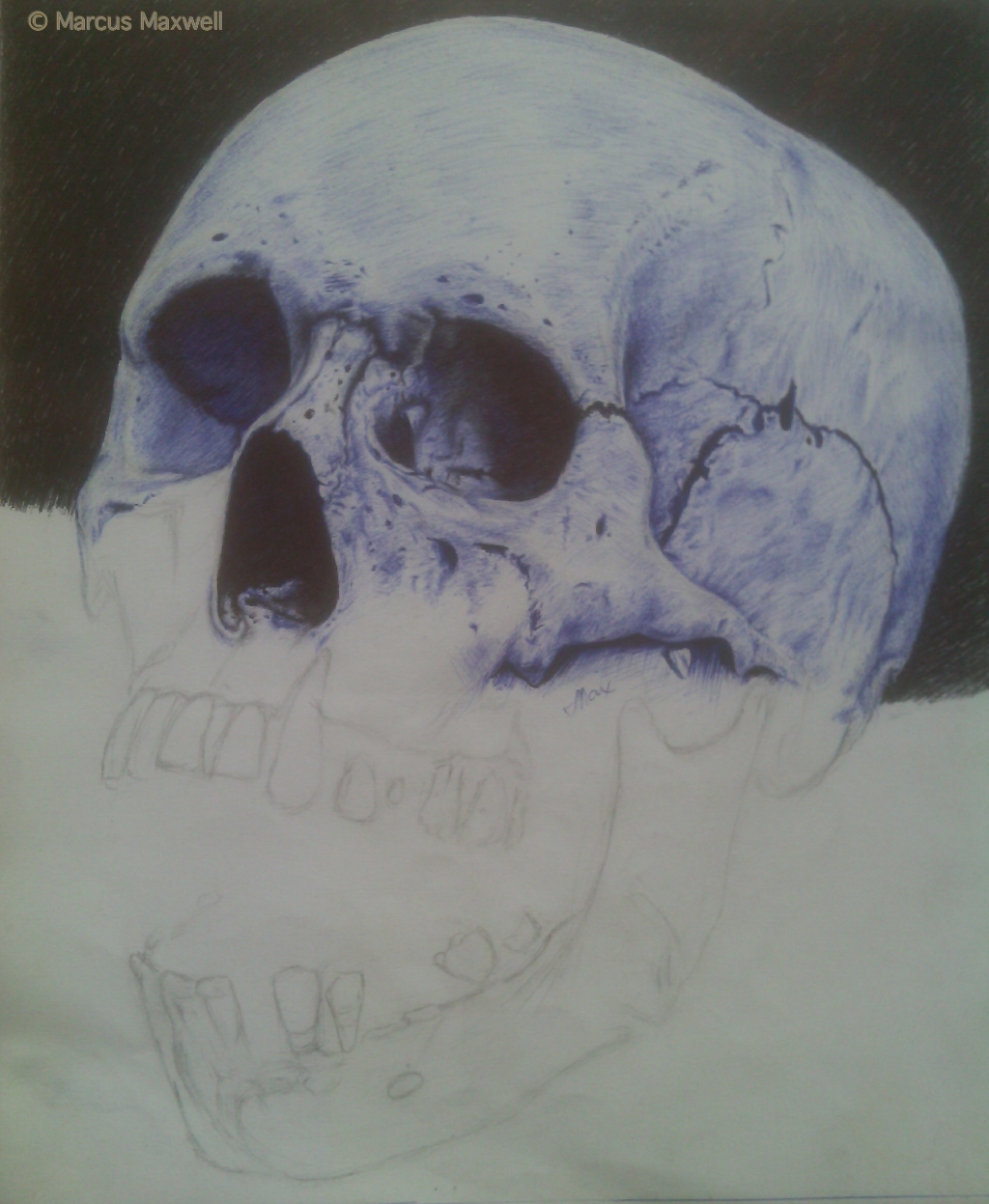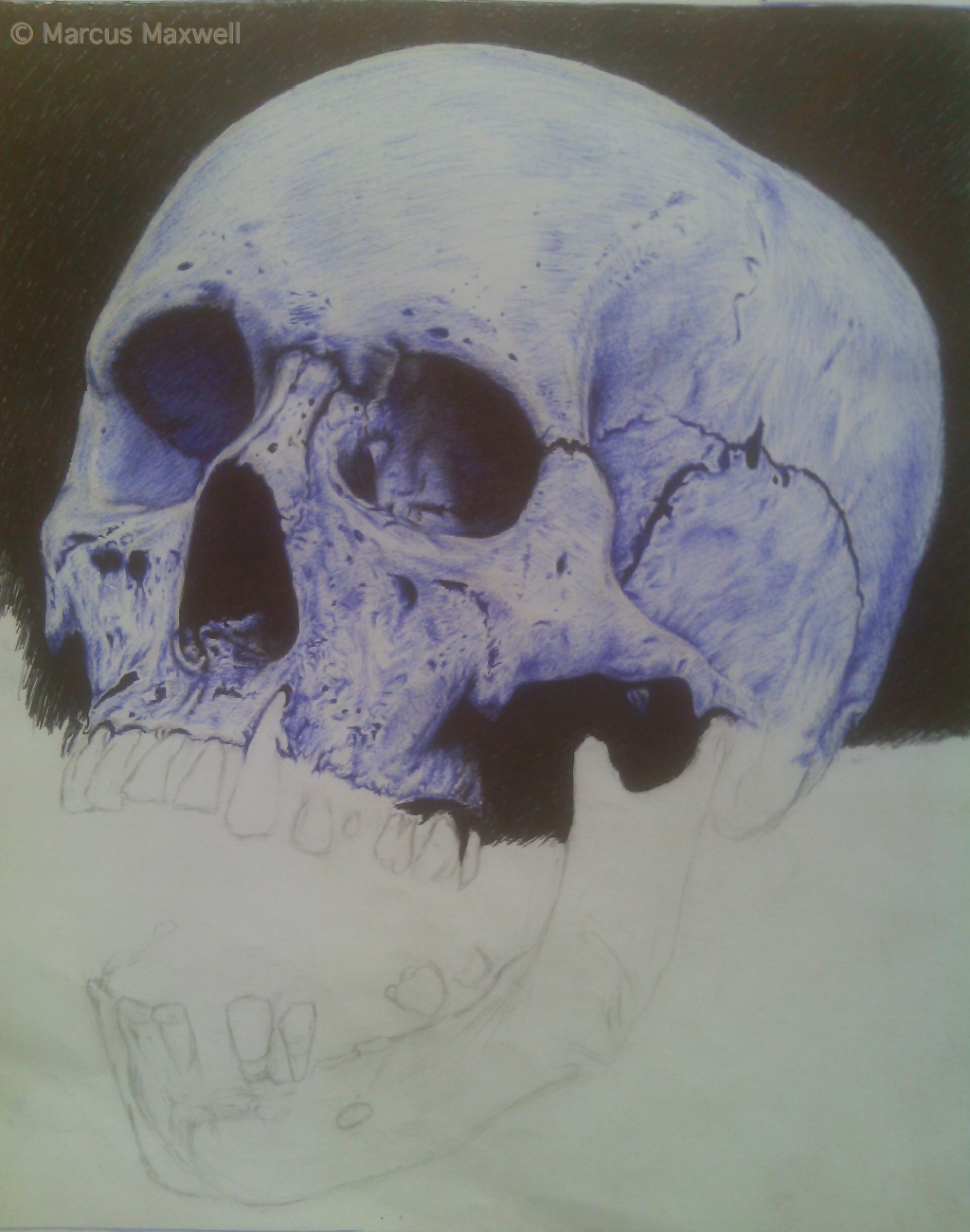Towards last year ending and early January, I was engaged in different activities and I wasn't chanced to finish up this piece. However, currently, am beginning to settle down and getting chance to work on this piece - it's all about the human skull.
For many years, artists have been captivated by the human skull. From renaissance vanity paintings to modern day art and tatoo, images of the skull remind us of death and that life is short and the time to live our dreams is no other time but now.
For an artist working today, understanding how to draw the human skull is no difference and less important than it was centuries ago. It is partinent to note that the bones of the skull shape the features of our characters and hold the muscles which create the subtle facial expressions that bring our drawings to life.
Therefore in the process of finishing this drawing, I bring you 5 weird facts you probably didn’t know about the most important feature of the human skull.
1) The human skull is full of HOLES
Besides the peeper hole, and the pie hole, the skull is full of tiny holes called foramina. These openings allow for the passage of the nerves and blood vessels that innervate the face. The largest hole in the skull is where the vertebral column joins the base of the skull, and is called the foramen magnum.
2) There is a difference between the brain case and the skull cap
In anatomical terms, the brain case includes these bones - sphenoid, frontal, ethmoid, occipital, parietals, and temporals. These bones combine together to make the case that protects and encloses the brain. However, when anatomists study the calvaria, or skull cap, they do not consider the ethmoid or sphenoid bones, that close up the base of the skull. They are the bottom two bones and without them, the brain case becomes the skull cap.
3) Teeth are not considered to be bones of the skull
There are two main groups in which the bones of the skull are divided into: the bones of the cranium, and the bones of the face. 8 bones make up the cranium, and 14 bones make up the facial skeleton, but the teeth are not considered to be bones of the skull.
4) There are fractals in every human skull
There are some jiggly and wiggly little lines between the bones of the skull. They are called sutures, and they are ridiculously long! They may not look it, but they are. One can't tell exactly how long they are, and it turns out they are impossible to measure exactly. You could use a measuring tape to get a straight line length from one point to another, but that measure wouldn’t account for all of those tiny little wiggles. The sutures of the skull are actually fractals, and measuring fractals is best left to the experts in mathematics.
5) Human skulls look different depending on what part of the world they come from and depending on if they are male or female.
Though we all have the same 22 bones in our skulls, their size and shape are different depending on our race and sex. A trained anatomist or anthropologist can tell the difference in a single glance. However, the skulls we see most often are of Asian decent because most anatomical specimens come from that part of the world.
In conclusion, we all are greately and wonderfully made. For the artist like me, there is always beauty to be found where most others see only death! The human skull is an amazing piece of evolutionary design, and it’s a design that every serious artist should know backwards and forwards, up and down.
Thank you for stopping by...
See Progress shots bellow...
Happy Viewing!







